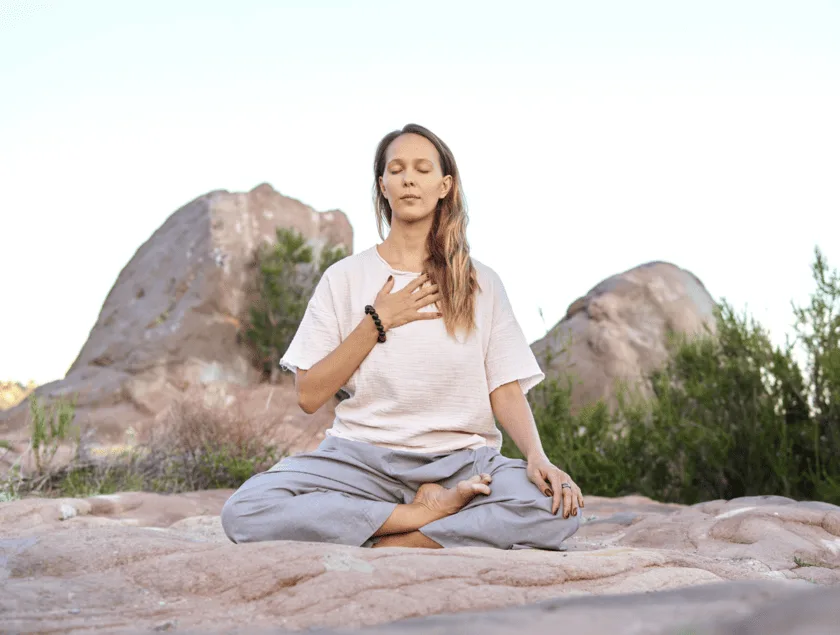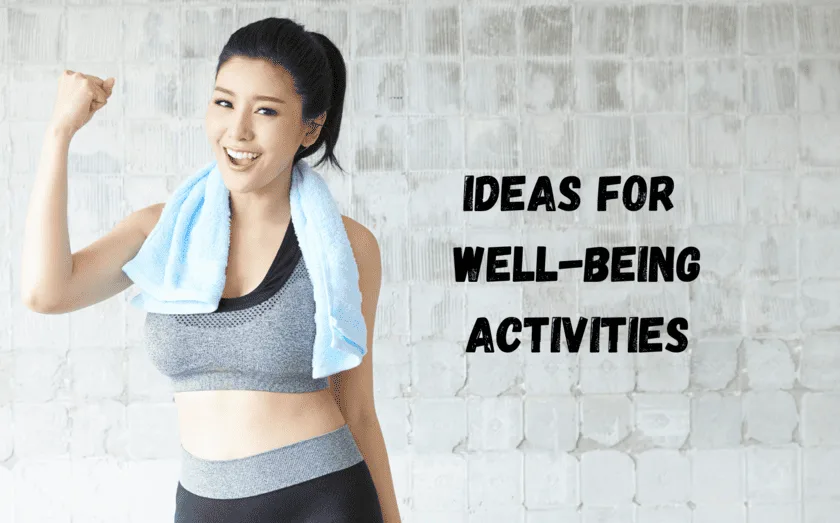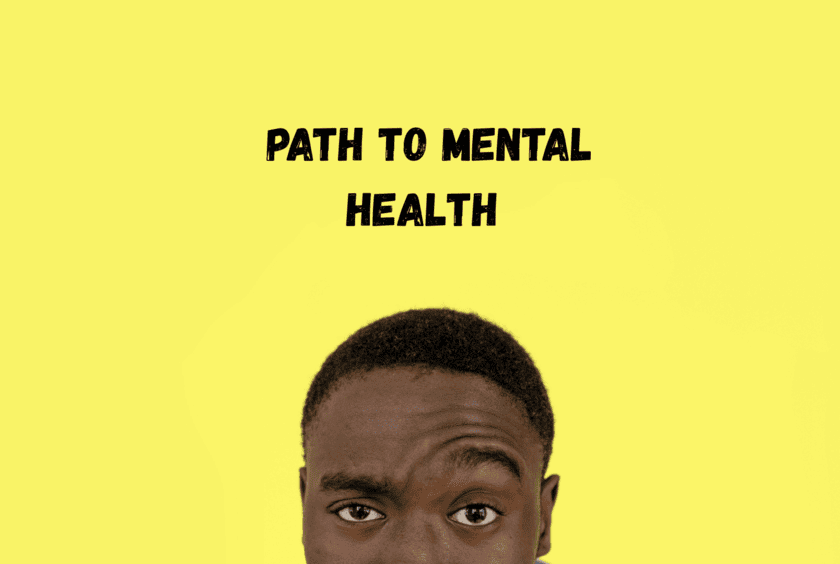What Does Physical Health Really Mean?
How You Can Optimize Your Physical Health? Physical health is often reduced to the absence of illness or the ability to perform daily tasks without fatigue. However, it encompasses much more than that. Physical health is the foundation of your overall well-being, influencing your energy levels, mental clarity, and emotional resilience. It’s about nurturing your body through movement, nutrition, rest, and self-care, so it can function optimally and support you in living a fulfilling life.
Think of your body as a complex, interconnected system. Every choice you make—whether it’s what you eat, how much you sleep, or how often you move—impacts this system. Physical health isn’t about perfection; it’s about creating habits that help you feel strong, energized, and capable, even in the midst of a busy schedule.
The Connection Between Body, Mind, and Spirit
Your physical health doesn’t exist in isolation. It’s deeply intertwined with your mental and spiritual well-being. When your body feels good, your mind is clearer, and your spirit feels lighter. Conversely, when you’re stressed or emotionally drained, it can manifest physically as fatigue, tension, or even illness.
Consider these examples of how body, mind, and spirit are connected:
- Exercise not only strengthens your muscles but also releases endorphins, boosting your mood and reducing stress.
- Mindful eating nourishes your body while fostering a deeper connection to the present moment and your inner self.
- Restorative sleep repairs your body, calms your mind, and rejuvenates your spirit.
By recognizing this connection, you can approach your health holistically, making choices that benefit your entire being rather than focusing on one aspect in isolation. It’s not about compartmentalizing your health but integrating it into a harmonious whole.
Nutrition: Fueling Your Body Right
The Basics of Balanced Eating
Understanding how to fuel your body doesn’t have to be complicated. At its core, balanced eating is about nourishing yourself with a variety of foods that provide the essential nutrients your body needs to thrive. Think of your plate as a canvas: more colors mean more nutrients (Consult a professional to ensure this information applies to your case).
A balanced meal typically includes:
- Protein: Found in foods like eggs, beans, lentils, tofu, fish, and lean meats—it supports muscle repair and keeps you full longer.
- Healthy Fats: Avocados, nuts, seeds, and olive oil are excellent sources—they’re essential for brain health and hormone regulation.
- Complex Carbohydrates: Think whole grains, sweet potatoes, quinoa, and oats—they provide steady energy throughout the day.
- Fruits and Vegetables: Packed with vitamins, minerals, and fiber, they’re the foundation of any healthy diet.
While it’s tempting to obsess over calorie counting or macronutrient ratios, focus on variety and moderation instead. Small, consistent choices over time are far more sustainable than rigid diets.

Quick and Healthy Meal Ideas for Busy Days
When time is scarce, it’s easy to fall into the trap of grab-and-go junk food. But with a little planning, you can whip up nutritious meals in minutes. Here are some ideas to keep you fueled without the stress:
- Overnight Oats: Combine oats, almond milk, chia seeds, and your favorite toppings (like berries or nuts) in a jar. Let it sit overnight for a ready-to-eat breakfast.
- Veggie-Packed Stir-Fry: Sauté pre-chopped vegetables with tofu, chicken, or shrimp, and toss with soy sauce or a squeeze of lime. Serve with brown rice or quinoa.
- Quick Buddha Bowl: Layer cooked grains, canned beans, fresh greens, and a handful of nuts or seeds. Drizzle with a simple dressing like olive oil and lemon.
- Egg Muffins: Whisk eggs, add chopped veggies, and bake in a muffin tin. Perfect for grab-and-go mornings or snacks.
These options aren’t just quick—they’re designed to keep you energized and satisfied, even on your busiest days. Remember, healthy eating doesn’t have to be time-consuming or perfect. It’s about making choices that work for you, one meal at a time.
Movement: Finding Joy in Exercise
Exercise doesn’t have to feel like a chore. When movement becomes a source of joy rather than obligation, it transforms from something you have to do into something you want to do. The key? Start small, listen to your body, and find what makes you feel alive—whether that’s dancing, walking in nature, or stretching with deep breaths.
How to Incorporate Movement Into Your Routine
Forget the “all or nothing” mindset. You don’t need hour-long gym sessions to reap the benefits of movement. Here’s how to weave it into your day, even when time feels scarce:
- Anchor it to existing habits: Do five squats while brushing your teeth, stretch during coffee breaks, or take a 10-minute walk after lunch.
- Make it social: Invite a friend for a weekend hike or join a casual dance class. Joy multiplies when shared.
- Redefine “exercise”: Gardening, playing with kids, or cleaning to upbeat music all count as movement.
“Movement is medicine. It doesn’t have to be perfect—it just has to be yours.”
Simple Exercises for Beginners
If you’re new to exercise or returning after a break, start with gentle, adaptable movements. Here’s a beginner-friendly routine (do 2-3 rounds):
| Exercise | How To | Modification |
|---|---|---|
| Bodyweight Squats | Feet shoulder-width apart, lower as if sitting back into a chair. | Hold onto a table for balance. |
| Wall Push-Ups | Stand arm’s length from a wall, lean forward, and push back. | Move closer to the wall for less intensity. |
| Seated Leg Lifts | While sitting, extend one leg straight, hold for 3 seconds, then switch. | Bend the knee slightly if needed. |
Listen to your body. If an exercise causes pain (not to be confused with mild discomfort), stop or adjust. Progress is personal—celebrate what your body can do today.

Rest and Recovery: The Power of Sleep
Why Sleep is Essential for Physical Health
Sleep is not just a luxury—it’s a biological necessity. It’s during sleep that your body repairs tissues, strengthens the immune system, and consolidates memories. Without adequate rest, your physical health can suffer in ways you might not immediately notice. Chronic sleep deprivation has been linked to a higher risk of conditions like heart disease, diabetes, and obesity. Even short-term lack of sleep can impair your focus, energy levels, and ability to recover from physical activity.
Think of sleep as your body’s reset button. It’s the time when your muscles recover from exercise, your hormones balance, and your brain processes the day’s experiences. Prioritizing sleep isn’t just about feeling rested—it’s about giving your body the tools it needs to function at its best.
Tips for Improving Sleep Quality
Improving your sleep doesn’t have to be complicated. Here are some practical, actionable tips to help you get better rest, even with a busy schedule:
- Create a consistent sleep schedule: Go to bed and wake up at the same time every day, even on weekends. This helps regulate your body’s internal clock.
- Optimize your sleep environment: Keep your bedroom cool, dark, and quiet. Consider using blackout curtains, earplugs, or a white noise machine if needed.
- Limit screen time before bed: The blue light from phones, tablets, and computers can interfere with your body’s production of melatonin, the sleep hormone. Try to avoid screens at least an hour before bedtime.
- Practice a bedtime routine: Wind down with calming activities like reading, gentle stretching, or meditation. This signals to your body that it’s time to relax.
- Watch your caffeine and alcohol intake: Both can disrupt your sleep cycle. Try to avoid caffeine in the afternoon and limit alcohol consumption, especially close to bedtime.
- Get moving during the day: Regular physical activity can improve sleep quality, but try to avoid intense workouts too close to bedtime.
Remember, small changes can make a big difference. Start with one or two of these tips and gradually build habits that work for you. Sleep is a cornerstone of physical health, and investing in it is one of the most impactful ways to care for your body.

Stress Management: Balancing Body and Mind
The Impact of Stress on Physical Health
Stress is an inevitable part of life, but when left unchecked, it can take a significant toll on your physical health. Chronic stress triggers the release of cortisol, a hormone that, in excess, can lead to a range of issues such as weakened immunity, high blood pressure, and digestive problems. Over time, this can increase the risk of more serious conditions like heart disease, diabetes, and even chronic pain. Stress also disrupts sleep, leaving you feeling fatigued and less able to cope with daily challenges. Recognizing the physical signs of stress—such as headaches, muscle tension, or frequent illness—is the first step toward managing it effectively.
Practical Stress-Relief Techniques
Managing stress doesn’t have to be complicated or time-consuming. Here are some simple, actionable strategies to help you find balance:
- Deep Breathing: Take a few minutes each day to practice deep breathing. Inhale slowly through your nose, hold for a few seconds, and exhale through your mouth. This simple technique can calm your nervous system and reduce tension.
- Mindful Movement: Engage in activities like yoga, tai chi, or even a short walk. These practices combine physical movement with mindfulness, helping to release stress and improve focus.
- Set Boundaries: Learn to say no to commitments that overwhelm you. Prioritize your time and energy on what truly matters, and don’t be afraid to delegate tasks when possible.
- Connect with Others: Social support is a powerful stress reliever. Spend time with loved ones, share your feelings, or join a community that aligns with your interests.
- Unplug Regularly: Take breaks from screens and technology. Designate specific times to disconnect and engage in activities that bring you joy, like reading, gardening, or listening to music.
Remember, small, consistent efforts can make a big difference in managing stress. Start with one technique that resonates with you and build from there.
Building Sustainable Habits
How to Start Small and Stay Consistent
When it comes to building sustainable habits, starting small is the key to long-term success. Instead of overwhelming yourself with drastic changes, focus on tiny, manageable steps that fit seamlessly into your daily routine. For example, if your goal is to exercise more, begin with just 10 minutes of movement a day rather than committing to an hour-long workout. This approach reduces resistance and makes it easier to stay consistent.
Here are some practical tips to help you start small and maintain momentum:
- Set micro-goals: Break your larger goals into smaller, achievable tasks. For instance, if you want to eat healthier, start by adding one serving of vegetables to your dinner each night.
- Anchor habits to existing routines: Link your new habit to something you already do consistently, like meditating for 5 minutes after brushing your teeth.
- Track your progress: Use a journal or app to monitor your efforts. Seeing small wins can boost motivation and reinforce your commitment.
Remember, consistency is more important than intensity. Even if your progress feels slow, small, steady actions compound over time to create lasting change.
Overcoming Setbacks and Staying Motivated
Setbacks are a natural part of any journey toward better health. Instead of viewing them as failures, see them as opportunities to learn and grow. Resilience is built through how you respond to challenges, not by avoiding them altogether.
Here’s how to navigate setbacks and keep your motivation alive:
- Practice self-compassion: Be kind to yourself when things don’t go as planned. Remind yourself that everyone faces obstacles, and it’s okay to start again.
- Reconnect with your “why”: Reflect on the deeper reasons behind your goals. Whether it’s feeling more energized or improving your mental clarity, revisiting your purpose can reignite your drive.
- Adjust your approach: If a particular habit isn’t working, don’t be afraid to tweak it. Flexibility is essential for finding what truly fits your lifestyle.
Motivation often ebbs and flows, so it’s important to create systems that support you even on days when you feel less inspired. Surround yourself with positive influences, whether it’s a supportive community, inspiring books, or uplifting podcasts, to keep your spirits high.
Holistic Health: Integrating Body, Mind, and Spirit
In the pursuit of well-being, it’s easy to focus on one aspect—whether it’s physical fitness, mental clarity, or spiritual growth—while neglecting the others. But true vitality comes from a harmonious balance of all three. Holistic health isn’t about perfection; it’s about recognizing that your body, mind, and spirit are deeply interconnected. When one thrives, the others follow.
The Importance of a Balanced Approach
Life’s demands often pull us in different directions, leaving little room for self-care. Yet, prioritizing only one dimension of health—like diet or exercise—without nurturing your emotional or spiritual well-being can lead to burnout or dissatisfaction. A holistic approach ensures that:
- Physical health fuels your energy and resilience.
- Mental clarity helps you navigate stress and make intentional choices.
- Spiritual connection grounds you in purpose and inner peace.
Think of it as tending to a garden: neglecting one area affects the entire ecosystem. Small, consistent efforts in each realm create a sustainable foundation for long-term well-being.
Simple Practices for Holistic Well-Being
You don’t need grand gestures or rigid routines to nurture your whole self. Here are practical, adaptable ways to integrate body, mind, and spirit into your daily life:
- Move with intention: A 10-minute walk, yoga, or stretching can reconnect you with your body.
- Pause and breathe: Even three deep breaths before a meal or meeting can center your mind.
- Reflect daily: Journal one gratitude or insight to foster spiritual awareness.
- Nourish mindfully: Choose foods that energize you—without guilt or restriction.
- Disconnect to reconnect: Set boundaries with screens to create space for presence.
“Holistic health is not a destination—it’s a compassionate journey of listening to your needs and honoring them, one small step at a time.”
FAQ: Holistic Health
- How do I start if I’m overwhelmed?
- Begin with one tiny habit—like drinking water first thing in the morning—and build from there. Progress compounds.
- Can holistic practices fit into a busy schedule?
- Absolutely. Micro-moments of mindfulness, movement, or reflection add up. Even two minutes counts.
- What if I don’t resonate with “spirituality”?
- It’s personal! Spirituality can mean connecting with nature, creativity, or values—whatever brings you meaning.
Remember, holistic health isn’t about adding more to your plate—it’s about weaving self-care into the life you already have. Every mindful choice, no matter how small, is a step toward wholeness.
Reference:
- Liu, Y., Menhas, R., Saqib, Z., & Park, S. (2024). Does physical activity influence health behavior, mental health, and psychological resilience? Frontiers in Psychology, 15, Article 1349880. https://doi.org/10.3389/fpsyg.2024.1349880
- Kreider, R. B., & Campbell, B. (2009). Protein for exercise and recovery. The Physician and Sportsmedicine, 37(2), 13-21. https://pubmed.ncbi.nlm.nih.gov/20048505/
- Gresham-Britt, H. (2024). Healthy fats for a healthy brain. Facing Dementia Together. https://facingdementiatogether.au/en/healthy-fats-for-a-healthy-brain/
- NHS. (2024). Eating a balanced diet. https://www.nhs.uk/live-well/eat-well/how-to-eat-a-balanced-diet/eating-a-balanced-diet/
- NHS. (2025). Why 5 A Day? https://www.nhs.uk/live-well/eat-well/5-a-day/why-5-a-day/
- Schwingshackl, L., & Hoffmann, G. (2024). Fundamentals of a healthy and sustainable diet. Nutrition Journal, 23, 150. https://pmc.ncbi.nlm.nih.gov/articles/PMC11608455/Grandner, M. A., Jackson, N., Gerstner, J. R., & Knutson, K. L. (2014). Sleep disturbance is associated with cardiovascular and metabolic disorders. Journal of Sleep Research, 23(4), 487–494. https://www.ncbi.nlm.nih.gov/pmc/articles/PMC4370346/





























